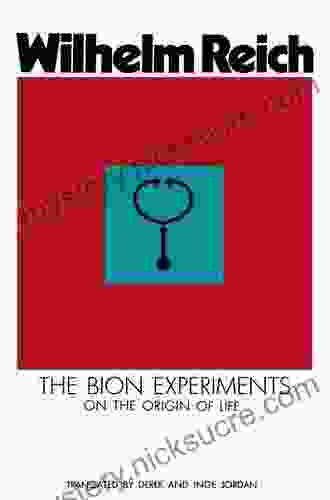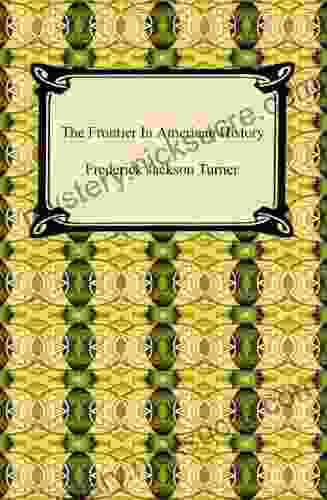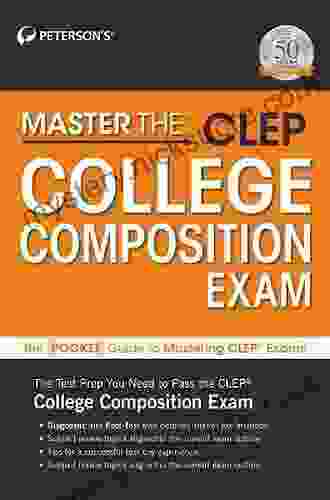The Bion Experiments: Illuminating the Origins of Life

![]()
4.9 out of 5
| Language | : | English |
| File size | : | 6664 KB |
| Text-to-Speech | : | Enabled |
| Enhanced typesetting | : | Enabled |
| Word Wise | : | Enabled |
| Print length | : | 212 pages |
| Screen Reader | : | Supported |
In the realm of scientific discovery, few inquiries are as profound as the pursuit of understanding the origins of life. The Bion Experiments, conducted by Stanley Miller and Harold Urey in 1953, stand as a groundbreaking milestone in this quest, offering tantalizing clues about the emergence of life on our planet. Join us on an enthralling journey as we delve into the captivating world of these experiments, uncovering the fascinating insights and discoveries that have shaped our understanding of life's enigmatic beginnings.
The Pioneering Spirit: Stanley Miller and Harold Urey
The Bion Experiments were the brainchild of two brilliant scientists: Stanley Miller, a young graduate student, and Harold Urey, a renowned Nobel laureate. Driven by an insatiable curiosity to unravel the secrets of life's origins, they embarked on a daring experimental venture that would forever leave its mark on the scientific landscape.
Miller and Urey hypothesized that the primitive atmosphere of Earth, unlike its current oxygen-rich composition, was dominated by a reducing atmosphere composed primarily of methane, ammonia, water, and hydrogen. They believed that the interaction of these gases under the influence of energy sources, such as lightning or ultraviolet radiation, could lead to the formation of complex organic molecules, the building blocks of life.
The Ingenious Experimental Setup
To test their hypothesis, Miller and Urey designed a meticulously crafted experimental apparatus that simulated the conditions they believed existed on early Earth. The apparatus consisted of a sealed glass flask containing a mixture of water, methane, ammonia, and hydrogen, along with electrodes to generate sparks that mimicked lightning.
Over the course of a week, the mixture was continuously circulated through the flask, exposing it to the simulated lightning strikes. As the experiment progressed, a remarkable transformation occurred. The initially colorless mixture gradually turned a murky brown, indicating the formation of complex organic compounds.
A Momentous Discovery: The Creation of Amino Acids
Upon analyzing the contents of the flask, Miller and Urey made a groundbreaking discovery: they had successfully synthesized amino acids, the fundamental building blocks of proteins. This finding provided compelling evidence to support their hypothesis that simple organic molecules could be produced from inorganic matter under conditions that may have existed on early Earth.
The experiment not only demonstrated the feasibility of abiogenesis, the natural emergence of life from non-living matter, but also shed light on the potential pathways by which life's precursors could have formed on our planet.
Beyond the Miller-Urey Experiment: Expanding Horizons
The Bion Experiments sparked an explosion of research into the origins of life, leading to a deeper understanding of the complex processes involved. Subsequent experiments by other scientists explored a wider range of conditions and gases, expanding the repertoire of organic molecules that could be formed under prebiotic conditions.
The discovery of amino acids in meteorites and comets further strengthened the case for panspermia, the theory that life originated elsewhere in the universe and was brought to Earth by extraterrestrial objects. Ongoing research continues to probe the depths of this captivating field, seeking answers to the fundamental question of how life emerged from the primordial soup of early Earth.
The Enduring Legacy: A Cornerstone of Scientific Discovery
The Bion Experiments remain a cornerstone of scientific discovery, providing invaluable insights into the origins of life. They demonstrated the remarkable ability of simple chemical reactions, under conditions that mirrored the primitive Earth, to produce complex organic compounds essential for life. This groundbreaking work has inspired generations of scientists and continues to guide our exploration of the origins of life on Earth and beyond.
: Embracing the Enigma of Life's Origins
The Bion Experiments stand as a testament to the power of scientific inquiry and the enduring quest for knowledge. They have opened up new avenues of research, ignited imaginations, and fueled our fascination with the enigmatic origins of life. While the complete picture of how life emerged on Earth remains elusive, the legacy of the Bion Experiments continues to illuminate our path towards understanding this profound mystery.
As we continue to unravel the secrets of life's origins, let us embrace the enigma with unwavering curiosity and a profound appreciation for the intricate tapestry of life that surrounds us.
4.9 out of 5
| Language | : | English |
| File size | : | 6664 KB |
| Text-to-Speech | : | Enabled |
| Enhanced typesetting | : | Enabled |
| Word Wise | : | Enabled |
| Print length | : | 212 pages |
| Screen Reader | : | Supported |
Do you want to contribute by writing guest posts on this blog?
Please contact us and send us a resume of previous articles that you have written.
 Fiction
Fiction Non Fiction
Non Fiction Romance
Romance Mystery
Mystery Thriller
Thriller SciFi
SciFi Fantasy
Fantasy Horror
Horror Biography
Biography Selfhelp
Selfhelp Business
Business History
History Classics
Classics Poetry
Poetry Childrens
Childrens Young Adult
Young Adult Educational
Educational Cooking
Cooking Travel
Travel Lifestyle
Lifestyle Spirituality
Spirituality Health
Health Fitness
Fitness Technology
Technology Science
Science Arts
Arts Crafts
Crafts DIY
DIY Gardening
Gardening Petcare
Petcare Kindle Edition
Kindle Edition Caitlyn Dare
Caitlyn Dare Jeff Scheetz
Jeff Scheetz Deirdre V Lovecky
Deirdre V Lovecky Jessica Holsman
Jessica Holsman John Jamieson
John Jamieson Elizabeth May
Elizabeth May Michael Gurian
Michael Gurian Phil Williams
Phil Williams Martina D Antiochia
Martina D Antiochia Leslie R Schover
Leslie R Schover Marc Van Den Bergh
Marc Van Den Bergh Shaunti Feldhahn
Shaunti Feldhahn John Kretschmer
John Kretschmer Dave Rearick
Dave Rearick Jennifer L Scott
Jennifer L Scott Lina K Lapina
Lina K Lapina Greg W Prince
Greg W Prince Mathew Orton
Mathew Orton Sonia Shah
Sonia Shah Daniel Prince
Daniel Prince Francis Glebas
Francis Glebas Kathy Woods
Kathy Woods Stephen King
Stephen King Maria Van Noord
Maria Van Noord Kyra Phillips
Kyra Phillips Warwick Deeping
Warwick Deeping David Wilber
David Wilber Veronica Eden
Veronica Eden Richard C Francis
Richard C Francis Stedman Graham
Stedman Graham Gary Lewis
Gary Lewis Scott Mcmillion
Scott Mcmillion Sammy Franco
Sammy Franco Sheri Morehouse
Sheri Morehouse Carrie Hope Fletcher
Carrie Hope Fletcher Lewis Kirkham
Lewis Kirkham Jim West
Jim West Lauren Manoy
Lauren Manoy Joanne Kimes
Joanne Kimes Peterson S
Peterson S Tony E Adams
Tony E Adams Issai Chozanshi
Issai Chozanshi Erin Beaty
Erin Beaty Trevor Thomas
Trevor Thomas Robert Garland
Robert Garland Kaplan Test Prep
Kaplan Test Prep Jess J James
Jess J James Jeff Belanger
Jeff Belanger Richard Barrett
Richard Barrett Carrie Marie Bratley
Carrie Marie Bratley Chad Eastham
Chad Eastham Sophie D Coe
Sophie D Coe Heather Balogh Rochfort
Heather Balogh Rochfort William L Sullivan
William L Sullivan Tina Schindler
Tina Schindler Marisa Peer
Marisa Peer Ken Sande
Ken Sande Jim Warnock
Jim Warnock Mary Pagones
Mary Pagones Julie Golob
Julie Golob Jack Canfield
Jack Canfield Philip Purser Hallard
Philip Purser Hallard Steven W Dulan
Steven W Dulan Douglas P Fry
Douglas P Fry William Rathje
William Rathje Bryce Carlson
Bryce Carlson Janet Evans
Janet Evans Justin Coulson
Justin Coulson Matthew Warner Osborn
Matthew Warner Osborn R Scott Thornton
R Scott Thornton Charles Staley
Charles Staley Mark Stavish
Mark Stavish Christine Mari Inzer
Christine Mari Inzer Julietta Suzuki
Julietta Suzuki Michael Tan
Michael Tan Rick Trickett
Rick Trickett Thomas Achatz
Thomas Achatz Sylvia Williams Dabney
Sylvia Williams Dabney Steve Barrett
Steve Barrett Tim Freke
Tim Freke Frank Muir
Frank Muir Rebecca Musser
Rebecca Musser Doug Cook
Doug Cook Cornelia Pelzer Elwood
Cornelia Pelzer Elwood John Moren
John Moren Collins Easy Learning
Collins Easy Learning Scott Cawthon
Scott Cawthon Shea Ernshaw
Shea Ernshaw Cathy Glass
Cathy Glass Marcia Scheiner
Marcia Scheiner Oprah Winfrey
Oprah Winfrey J Maarten Troost
J Maarten Troost Martin Davies
Martin Davies Dan Romanchik Kb6nu
Dan Romanchik Kb6nu Katherine D Kinzler
Katherine D Kinzler Susan Garcia
Susan Garcia Richard Henry Dana
Richard Henry Dana The Atavist
The Atavist M E Brines
M E Brines Nick Gamis
Nick Gamis Leah Zani
Leah Zani Kevin Howell
Kevin Howell Earl G Williams
Earl G Williams Byron L Reeder
Byron L Reeder S M Kingdom
S M Kingdom Stian Christophersen
Stian Christophersen Michelle Travis
Michelle Travis Lucy Cooke
Lucy Cooke Matt Price
Matt Price Fiona Beddall
Fiona Beddall Dr Tommy John
Dr Tommy John C F Crist
C F Crist Craig Callender
Craig Callender Rob Pate
Rob Pate Valliappa Lakshmanan
Valliappa Lakshmanan Chris Morton
Chris Morton Carlos I Calle
Carlos I Calle Ian Tuhovsky
Ian Tuhovsky Ashley Eckstein
Ashley Eckstein J D Williams
J D Williams George Daniel
George Daniel Paul Rabinow
Paul Rabinow Joanne V Hickey
Joanne V Hickey Gary Mayes
Gary Mayes Ivan Gridin
Ivan Gridin Vivian Foster
Vivian Foster C S Lewis
C S Lewis Robert Moor
Robert Moor Robert D Gibbons
Robert D Gibbons Jasmine Shao
Jasmine Shao Freya Pickard
Freya Pickard Ashley Christensen
Ashley Christensen R L Medina
R L Medina David Savedge
David Savedge Shyima Hall
Shyima Hall Michael Chatfield
Michael Chatfield Jeffrey L Kohanek
Jeffrey L Kohanek Martina Mcbride
Martina Mcbride Rowena Bennett
Rowena Bennett Skip Lockwood
Skip Lockwood Dory Willer
Dory Willer Valerie Poore
Valerie Poore E W Barton Wright
E W Barton Wright Robert Larrison
Robert Larrison Emt Basic Exam Prep Team
Emt Basic Exam Prep Team Dave Bosanko
Dave Bosanko Neville Goddard
Neville Goddard Scarlett V Clark
Scarlett V Clark Megan Miller
Megan Miller Lew Freedman
Lew Freedman Vincent Chidindu Asogwa
Vincent Chidindu Asogwa Oliver Sacks
Oliver Sacks Joseph Correa
Joseph Correa James W Anderson
James W Anderson Keith Brewer
Keith Brewer Ralph Galeano
Ralph Galeano Jill Angie
Jill Angie Howard E Mccurdy
Howard E Mccurdy Luc Mehl
Luc Mehl Marco Wenisch
Marco Wenisch Chris Bonington
Chris Bonington Emily Writes
Emily Writes Graham Hancock
Graham Hancock Charles Salzberg
Charles Salzberg Sue Elvis
Sue Elvis Aaron Reed
Aaron Reed Sheila A Sorrentino
Sheila A Sorrentino Duncan Steel
Duncan Steel Michael Lear Hynson
Michael Lear Hynson Buddy Levy
Buddy Levy Lisa Hopp
Lisa Hopp Malika Grayson
Malika Grayson Barbara Acello
Barbara Acello Charles Sanger
Charles Sanger Ronald T Potter Efron
Ronald T Potter Efron Victoria Honeybourne
Victoria Honeybourne Edward Humes
Edward Humes Elisabeth Elliot
Elisabeth Elliot Hecateus Apuliensis
Hecateus Apuliensis Paige Powers
Paige Powers Nicola Yoon
Nicola Yoon Dina Nayeri
Dina Nayeri Dorothy Canfield Fisher
Dorothy Canfield Fisher Matt Baglio
Matt Baglio John M Marzluff
John M Marzluff Bruce Maxwell
Bruce Maxwell Ruthellen Josselson
Ruthellen Josselson James Beard
James Beard Ransom Riggs
Ransom Riggs Chris Pountney
Chris Pountney William Wood
William Wood Maha Alkurdi
Maha Alkurdi Bryan Litz
Bryan Litz Natasha Ngan
Natasha Ngan David Tanis
David Tanis Konstantinos Mylonas
Konstantinos Mylonas Katie Fallon
Katie Fallon Lingo Mastery
Lingo Mastery David Eagleman
David Eagleman Graham Norton
Graham Norton Sophie Messager
Sophie Messager Della Ata Khoury
Della Ata Khoury Jennifer Rose
Jennifer Rose James Miller
James Miller Max Lugavere
Max Lugavere Steve Guest
Steve Guest Db King
Db King Charu C Aggarwal
Charu C Aggarwal Paul A Offit
Paul A Offit Jack Disbrow Gunther
Jack Disbrow Gunther Cal Newport
Cal Newport Silvia Dunn
Silvia Dunn Tamara Ferguson
Tamara Ferguson Shelby Hailstone Law
Shelby Hailstone Law Nedu
Nedu Dan Flores
Dan Flores Michael Mewshaw
Michael Mewshaw Joyceen S Boyle
Joyceen S Boyle Ian Leslie
Ian Leslie J R Rain
J R Rain Julia Ann Clayton
Julia Ann Clayton Romola Anderson
Romola Anderson Tim S Grover
Tim S Grover Don Allen Jr
Don Allen Jr Winky Lewis
Winky Lewis Dian Olson Belanger
Dian Olson Belanger Lsat Unplugged
Lsat Unplugged David Nathan Fuller
David Nathan Fuller Maurice J Thompson
Maurice J Thompson Eugenia G Kelman
Eugenia G Kelman Fmg Publications Special Edition
Fmg Publications Special Edition Michael Blastland
Michael Blastland Lynn Butler Kisber
Lynn Butler Kisber John Burroughs
John Burroughs Sarah Prager
Sarah Prager Philippe Karl
Philippe Karl Matt Racine
Matt Racine Diane Lindsey Reeves
Diane Lindsey Reeves John J Ratey
John J Ratey Ronit Irshai
Ronit Irshai Richard W Voelz
Richard W Voelz Meriwether Lewis
Meriwether Lewis Nicholas Tomalin
Nicholas Tomalin Stephen Harrison
Stephen Harrison Kat Davis
Kat Davis Nigel Cawthorne
Nigel Cawthorne Mo Gawdat
Mo Gawdat Hibiki Yamazaki
Hibiki Yamazaki Matthew Marchon
Matthew Marchon Healthfit Publishing
Healthfit Publishing Thomas Daniels
Thomas Daniels Rita Golden Gelman
Rita Golden Gelman Jason Runkel Sperling
Jason Runkel Sperling Declan Lyons
Declan Lyons Jennifer Appel
Jennifer Appel Suzanne Young
Suzanne Young Katharine Mcgee
Katharine Mcgee Cassandra Mack
Cassandra Mack Donna R Causey
Donna R Causey John R Mabry
John R Mabry Sam Priestley
Sam Priestley C J Archer
C J Archer Emma Warren
Emma Warren Lily Field
Lily Field Ivar Dedekam
Ivar Dedekam Karen J Rooney
Karen J Rooney Mark Stanton
Mark Stanton Richard Drake
Richard Drake Nawuth Keat
Nawuth Keat Bruce W Harris
Bruce W Harris Lily Raff Mccaulou
Lily Raff Mccaulou Bunmi Laditan
Bunmi Laditan William Ian Miller
William Ian Miller Shawna Richer
Shawna Richer Jesse Romero
Jesse Romero Mcgraw Hill
Mcgraw Hill Sarah Berman
Sarah Berman Sterling Test Prep
Sterling Test Prep Bruce Van Brunt
Bruce Van Brunt Ron Senyor
Ron Senyor Tim Glover
Tim Glover Vladimir Lossky
Vladimir Lossky Martha Finley
Martha Finley David Cannon
David Cannon Dvora Meyers
Dvora Meyers Sara Gaviria
Sara Gaviria James Goi Jr
James Goi Jr Tom Bass
Tom Bass Pamela Weintraub
Pamela Weintraub Cameron Mcwhirter
Cameron Mcwhirter Henry Malone
Henry Malone John H Falk
John H Falk Niels H Lauersen
Niels H Lauersen Douglas Preston
Douglas Preston Sallyann Beresford
Sallyann Beresford Mark Hansen
Mark Hansen Dick Hannula
Dick Hannula Rand Cardwell
Rand Cardwell Lee Jackson
Lee Jackson Guy Grieve
Guy Grieve Michael A Tompkins
Michael A Tompkins Nicolas Bergeron
Nicolas Bergeron Lynette Noni
Lynette Noni Shmuel Goldberg
Shmuel Goldberg Celeste Headlee
Celeste Headlee Stella Cottrell
Stella Cottrell William M Baum
William M Baum Michael D Alessio
Michael D Alessio Jim Al Khalili
Jim Al Khalili Maren Stoffels
Maren Stoffels Norman Thelwell
Norman Thelwell Leslie A Sams
Leslie A Sams Hugh Aldersey Williams
Hugh Aldersey Williams Helen Zuman
Helen Zuman C M Carney
C M Carney Donna Goldberg
Donna Goldberg Troy Horne
Troy Horne Huberta Wiertsema
Huberta Wiertsema Jessica Howard
Jessica Howard Kevin A Morrison
Kevin A Morrison Dennis Adler
Dennis Adler Craig Martelle
Craig Martelle Albert Jeremiah Beveridge
Albert Jeremiah Beveridge Kevin Houston
Kevin Houston Nick Littlehales
Nick Littlehales Mary C Townsend
Mary C Townsend Don S Lemons
Don S Lemons Jared Diamond
Jared Diamond Elizabeth Laing Thompson
Elizabeth Laing Thompson Kerry H Cheever
Kerry H Cheever Pedro Urvi
Pedro Urvi Steven Kerry Brown
Steven Kerry Brown Caleb J Tzilkowski
Caleb J Tzilkowski Pat Rigsby
Pat Rigsby Denise May Levenick
Denise May Levenick Tyler Trent
Tyler Trent Tanya Hackney
Tanya Hackney Terry Laughlin
Terry Laughlin Om Krishna Uprety
Om Krishna Uprety Kathleen Flinn
Kathleen Flinn Creek Stewart
Creek Stewart Samantha De Senna Fernandes
Samantha De Senna Fernandes Ken Schwaber
Ken Schwaber E Ink Utilizer
E Ink Utilizer Law School Admission Council
Law School Admission Council Max Prasac
Max Prasac Lee Alan Dugatkin
Lee Alan Dugatkin Kendall Rose
Kendall Rose Gregory A Kompes
Gregory A Kompes Max Lucado
Max Lucado Scott Mactavish
Scott Mactavish John Vince
John Vince Trevelyan
Trevelyan Anthony Camera
Anthony Camera Nikki Carroll
Nikki Carroll Simon A Rego
Simon A Rego Mike X Cohen
Mike X Cohen Veronica Roth
Veronica Roth Dr Monika Chopra
Dr Monika Chopra Jamie Marich
Jamie Marich Sandra Niche
Sandra Niche Melanie Anne Phillips
Melanie Anne Phillips Melissa Mullamphy
Melissa Mullamphy Laurie Notaro
Laurie Notaro Kruti Joshi
Kruti Joshi Ivy Hope
Ivy Hope Arrl Inc
Arrl Inc Orangepen Publications
Orangepen Publications Nick Tumminello
Nick Tumminello Frederick Jackson Turner
Frederick Jackson Turner Linda Rosenkrantz
Linda Rosenkrantz Natasha Daniels
Natasha Daniels Jimmy Chin
Jimmy Chin John Grehan
John Grehan Melissa A Priblo Chapman
Melissa A Priblo Chapman Lisa Feldman Barrett
Lisa Feldman Barrett Paul Murdin
Paul Murdin Robert A Cutietta
Robert A Cutietta Carmen Davenport
Carmen Davenport Cecil B Hartley
Cecil B Hartley Kelly Rowland
Kelly Rowland Mark Young
Mark Young Theodora Papatheodorou
Theodora Papatheodorou Ira K Wolf
Ira K Wolf Thomas Carothers
Thomas Carothers Emily Lowry
Emily Lowry Meg Cabot
Meg Cabot Pam Flowers
Pam Flowers Roger J Davies
Roger J Davies Sarah Ockwell Smith
Sarah Ockwell Smith Richard Harding Davis
Richard Harding Davis Helen Webster
Helen Webster Dianne Maroney
Dianne Maroney Upton Sinclair
Upton Sinclair Lianna Marie
Lianna Marie Winslow Tudor
Winslow Tudor Lottie Bildirici
Lottie Bildirici Simon Michael Prior
Simon Michael Prior Meghan Daum
Meghan Daum Elena Paige
Elena Paige Joel Best
Joel Best Caroline Manta
Caroline Manta Ed Housewright
Ed Housewright Maxine A Goldman
Maxine A Goldman Jim Supica
Jim Supica Wilhelm Reich
Wilhelm Reich Tey Meadow
Tey Meadow Nicola S Dorrington
Nicola S Dorrington Judith Merkle Riley
Judith Merkle Riley Bruce Watt
Bruce Watt Heather Jacobson
Heather Jacobson Eric R Dodge
Eric R Dodge Kevin Panetta
Kevin Panetta Dounya Awada
Dounya Awada Sarah Baker
Sarah Baker John H Cunningham
John H Cunningham Destiny S Harris
Destiny S Harris Narain Moorjani
Narain Moorjani William Ellet
William Ellet Tricia Levenseller
Tricia Levenseller Peter J D Adamo
Peter J D Adamo Carol Inskipp
Carol Inskipp Jonathan T Gilliam
Jonathan T Gilliam Matt Mullenix
Matt Mullenix Albert Rutherford
Albert Rutherford Thomas Deetjen
Thomas Deetjen Olivier Doleuze
Olivier Doleuze Pia Nilsson
Pia Nilsson Kacen Callender
Kacen Callender Stacey Rourke
Stacey Rourke Fern Schumer Chapman
Fern Schumer Chapman Elizabeth Dupart
Elizabeth Dupart Jane Brocket
Jane Brocket Leon Speroff
Leon Speroff K C Cole
K C Cole Ned Feehally
Ned Feehally Scott Hartshorn
Scott Hartshorn Wayne Coffey
Wayne Coffey Mona Bijjani
Mona Bijjani Jen Howver
Jen Howver Joe Baker
Joe Baker Peter Bodo
Peter Bodo Jim Wiese
Jim Wiese Tyler Burt
Tyler Burt Roger Marshall
Roger Marshall W D Wetherell
W D Wetherell Darcy Lever
Darcy Lever Marc Bona
Marc Bona L W Jacobs
L W Jacobs Eric P Lane
Eric P Lane Paul Lobo
Paul Lobo Carole Bouchard
Carole Bouchard Jacob Erez
Jacob Erez Zachery Knowles
Zachery Knowles Erin Macy
Erin Macy John Flanagan
John Flanagan Joseph Moss
Joseph Moss Sherri L Jackson
Sherri L Jackson Marla Taviano
Marla Taviano Bruce Sutherland
Bruce Sutherland Wyatt Mcspadden
Wyatt Mcspadden Ron Rapoport
Ron Rapoport Elizabeth Anne Wood
Elizabeth Anne Wood Robert Walker
Robert Walker Susan Frederick Gray
Susan Frederick Gray Susan Orlean
Susan Orlean Richard Bullivant
Richard Bullivant J R Harris
J R Harris David Martin
David Martin Phil Bourque
Phil Bourque Jim Kempton
Jim Kempton Tibor Rutar
Tibor Rutar Sarah Jacoby
Sarah Jacoby Larry Larsen
Larry Larsen Elaine Tyler May
Elaine Tyler May Elmer Keith
Elmer Keith Tom Cunliffe
Tom Cunliffe Leah Hazard
Leah Hazard Robert Edward Grant
Robert Edward Grant Brandy Colbert
Brandy Colbert Clement Salvadori
Clement Salvadori Lois Lowry
Lois Lowry
Light bulbAdvertise smarter! Our strategic ad space ensures maximum exposure. Reserve your spot today!
 Ricky BellFollow ·6.1k
Ricky BellFollow ·6.1k Fernando PessoaFollow ·14.7k
Fernando PessoaFollow ·14.7k Ryūnosuke AkutagawaFollow ·12.1k
Ryūnosuke AkutagawaFollow ·12.1k James JoyceFollow ·6.9k
James JoyceFollow ·6.9k Jayson PowellFollow ·5.6k
Jayson PowellFollow ·5.6k Branden SimmonsFollow ·10.4k
Branden SimmonsFollow ·10.4k Yasunari KawabataFollow ·9.8k
Yasunari KawabataFollow ·9.8k Art MitchellFollow ·15k
Art MitchellFollow ·15k

 Henry David Thoreau
Henry David ThoreauHow To Bake In Unique Way: Unleash Your Culinary...
Baking is an art form that transcends the...
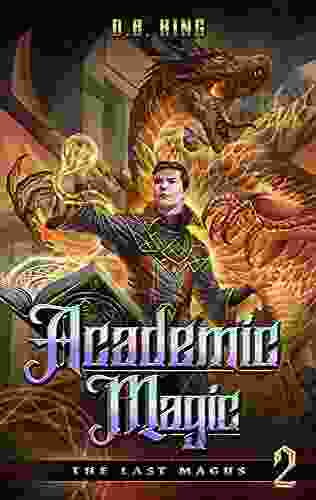
 F. Scott Fitzgerald
F. Scott FitzgeraldAcademic Magic: Unveil the Secrets of The Last Magus
Delve into a Realm of...
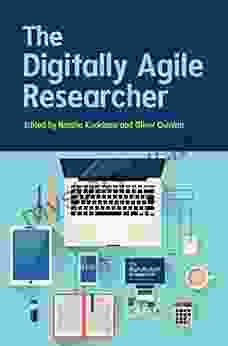
 John Green
John GreenThe Digitally Agile Researcher in UK Higher Education:...
In the rapidly...

 George Orwell
George OrwellZinc: Sources And Significance To Human Health
Zinc, an essential trace mineral, plays a...

 Mario Simmons
Mario SimmonsToo Scared to Tell: A Harrowing and Thought-Provoking...
In the realm...
4.9 out of 5
| Language | : | English |
| File size | : | 6664 KB |
| Text-to-Speech | : | Enabled |
| Enhanced typesetting | : | Enabled |
| Word Wise | : | Enabled |
| Print length | : | 212 pages |
| Screen Reader | : | Supported |


